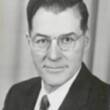Fluent forever: how to learn any language fast and never forget it
Description
More Details
9780385348119
9780385348102
9781666591637
Also in this Series
Published Reviews
Kirkus Book Review
The creator of the popular language-learning website Fluent-Forever.com debuts by putting between covers the essentials of the program that he and myriad others have found helpful.The author is indeed a buoyant, ebullient Harold Hill of a salesman (no dour Willy Loman here!). Throughout his textwhich includes many self-help design features, including text boxes, bullet points, illustrations, chapter-end reminders and key pointsWyner reminds us repeatedly about how enjoyable his program is. About the vocabulary cards he recommends, he writes, Youll discover that theyre a lot of fun to create and a lot of fun to review. Thats certainly debatable. The authors program does make use of many sensible and even revolutionary methods for learning a languageprincipally, the use of visual and auditory reminders of the vocabulary and grammar a novice needs to learn. The more senses involved, the more certain the learning and retention. Wyner also slays a few hoary dragons that continue to dominate lots of classroom instruction: learning vocabulary in clusters of related words (he proposes that learners begin with the 625 most common words), studying grammar in isolation, translation exercises (he advises using only the new language). His arguments and justifications take a little over half of his text; the remainder he calls The Toolbox, and here he gives very specific advice aboutand illustrations ofhis flashcard techniques. He also recommends the heavy use of Google Images and other online visual and auditory aids for beginnersespecially sound clips of native speakers. He urges that learners would benefit from mastering the International Phonetic Alphabet early in the process, and he provides a host of appendices, including the International Phonetic Alphabet Decoder.A sensible approach that nonetheless requires a substantial commitment of time and energy; as the author well knows, there are no shortcuts to learning anything worthwhile. Copyright Kirkus Reviews, used with permission.

































